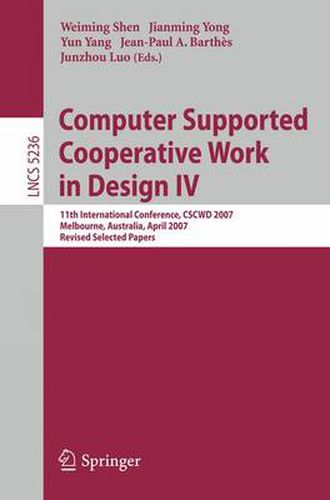Readings Newsletter
Become a Readings Member to make your shopping experience even easier.
Sign in or sign up for free!
You’re not far away from qualifying for FREE standard shipping within Australia
You’ve qualified for FREE standard shipping within Australia
The cart is loading…






This title is printed to order. This book may have been self-published. If so, we cannot guarantee the quality of the content. In the main most books will have gone through the editing process however some may not. We therefore suggest that you be aware of this before ordering this book. If in doubt check either the author or publisher’s details as we are unable to accept any returns unless they are faulty. Please contact us if you have any questions.
Design of complex artifacts and systems requires the cooperation of multidisciplinary design teams using multiple sophisticated commercial and non-commercial engine- ing tools such as CAD tools, modeling, simulation and optimization software, en- neering databases, and knowledge-based systems. Individuals or individual groups of multidisciplinary design teams usually work in parallel and independently with various engineering tools, which are located on different sites, often for quite a long period of time. At any moment, individual members may be working on different versions of a design or viewing the design from various perspectives, at different levels of details. In order to meet these requirements, it is necessary to have efficient comput- supported collaborative design systems. These systems should not only automate in- vidual tasks, in the manner of traditional computer-aided engineering tools, but also enable individual members to share information, collaborate, and coordinate their activities within the context of a design project. Based on close international collaboration between the University of Technology of Compiegne in France and the Institute of Computing Technology of the Chinese Ac- emy of Sciences in the early 1990s, a series of international workshops on CSCW in Design started in 1996. In order to facilitate the organization of these workshops, an International Working Group on CSCW in Design (CSCWD) was established and an International Steering Committee was formed in 1998. The series was converted to int- national conferences in 2000 building on the success of the four previous workshops.
$9.00 standard shipping within Australia
FREE standard shipping within Australia for orders over $100.00
Express & International shipping calculated at checkout
This title is printed to order. This book may have been self-published. If so, we cannot guarantee the quality of the content. In the main most books will have gone through the editing process however some may not. We therefore suggest that you be aware of this before ordering this book. If in doubt check either the author or publisher’s details as we are unable to accept any returns unless they are faulty. Please contact us if you have any questions.
Design of complex artifacts and systems requires the cooperation of multidisciplinary design teams using multiple sophisticated commercial and non-commercial engine- ing tools such as CAD tools, modeling, simulation and optimization software, en- neering databases, and knowledge-based systems. Individuals or individual groups of multidisciplinary design teams usually work in parallel and independently with various engineering tools, which are located on different sites, often for quite a long period of time. At any moment, individual members may be working on different versions of a design or viewing the design from various perspectives, at different levels of details. In order to meet these requirements, it is necessary to have efficient comput- supported collaborative design systems. These systems should not only automate in- vidual tasks, in the manner of traditional computer-aided engineering tools, but also enable individual members to share information, collaborate, and coordinate their activities within the context of a design project. Based on close international collaboration between the University of Technology of Compiegne in France and the Institute of Computing Technology of the Chinese Ac- emy of Sciences in the early 1990s, a series of international workshops on CSCW in Design started in 1996. In order to facilitate the organization of these workshops, an International Working Group on CSCW in Design (CSCWD) was established and an International Steering Committee was formed in 1998. The series was converted to int- national conferences in 2000 building on the success of the four previous workshops.